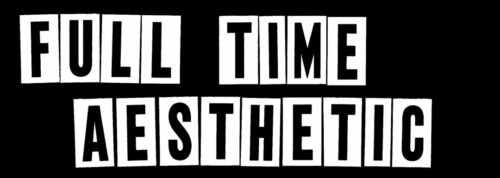The History of Heavy Metal Volume 3: The Golden Age of Thrash: Thrash and Crossover 1983-1991
Rejoice metalheads: the newest entry in The History of Heavy Metal is a deep dive into one of the most beloved subgenres of metal: thrash. The History of Heavy Metal Volume 3: The Golden Age of Thrash: Thrash and Crossover 1983-1991 brings us to a seminal moment in 1983 (if you know, you know; if you don’t read on) and on through the 80’s, while touching on the biggest groups, smaller groups worldwide, and such factions as crossover and prog-thrash. The latest installment is in the same vein as the first two volumes, with entries under each band focused on songs rather than albums as a whole—as I noted in the review of Volume 2: NWoBHM and Beyond, this format is quite helpful for people new to metal, especially in an age of streaming song by song, and also to those metalheads looking for an introduction to bands they’ve overlooked. As the volumes progress they necessarily become more focused, as metal split into subgenres far from its hazily defined early rock origins and the realm of the early 70’s pioneers.
So many styles of music are pioneered by artists that later fall by the wayside. However, thrash as a genre was largely defined by a band that has subsequently become a platinum juggernaut. Metallica dropped Kill ‘Em All in 1983, and metal was never the same. They may be sellouts in the eyes of many, but they are certainly given their due here, reminding those who dismissed them after 1991’s Metallica (or Load, or Lars vs Napster, or Lulu, or any number of supposed transgressions) of not only their importance but just how fucking good those first four albums are. Stranger Things might have you listening to “Master Of Puppets” but zine author Badger will have you understanding its place in musical canon, with modes, tunings and callbacks to Debussy juxtaposed against the sheer pleasure of the music.
The technical aspects of thrash are thus given their due here, and while Badger’s prose never shies from proper terminology it remains accessible for the layperson. Atonality, dissonance and brutality of rhythm come up more than once, as does the physical aspect of thrash. “Most early Metallica riffs aren’t even that difficult, except for the downpicking” I said in a recent conversation, but ‘except for the downpicking’ is doing a lot of heavy lifting there. The stressful action of thrash downpicking requires bodily skill as well as musical, and my own wrists just can’t take it. (Insert jacking-off joke here: we are only following the steps of a thousand 80’s metal dudes.)
Another of the “big four” purveyors of thrash are Slayer, who leaned into the Satanic side of metal and were quite happy to shock their audiences in various ways. Badger pulls no punches on examining their extremely controversial “Angel of Death,” a technical masterpiece which is also a deeply uncomfortable tale about the Holocaust. Rather, in this longest entry in the zine he examines why listeners might enjoy the song, but admits it can be hard to find justification for that enjoyment. Taken as a whole the song is (supposedly) against its subject, but that view of the song requires as Badger puts it, a transmutation of enthusiasm: “it asks that you, the listener, transform the marvelously sickening visceral malice of the song into an equally visceral sickened condemnation of the crimes that it records.” And is that enough? Yes, most listeners (one would hope!) will automatically think ‘Nazis bad.’ But we know that already surely, so even the most sympathetic Slayer fan has to question the point of placing a track about such real life evil in the midst of more fantastical —and certainly glorified—supernatural horrors. My cursory review here is necessarily less in depth compared to the entry in the zine. But it is a credit to Badger that the issue isn’t ignored. These thorny issues arise repeatedly in metal, and will certainly rear their ugly head in further volumes (black metal, I’m looking at you.)
The expected American bands are covered here (Megadeth and Anthrax rounding out the ‘big four’) alongside influential international acts like Voivod (Canada) and Kreator (Germany.) Space is also made for groups who may not be as well known, such as Dorsal Atlantica (Brazil), Massakre (Chile) and Morbid Saint (Wisconsin) and the greats of crossover like Suicidal Tendencies.
Volume 3 is characterized by the same careful research, tight prose, and even occasional humor (calling Bobby Ellsworth of Overkill “the World’s Largest Ham”) as the previous two. Badger seeks to continually improve on the zines (and has rewritten parts of the earlier volumes, which are still available if you haven’t picked those up yet) and includes a small addendum to Volume 2 at then end in this issue. If thrash metal isn’t your thing, you still stand to learn a lot about musical history, and if you prefer a different genre—well, doom metal, death metal, and many more remain.
Find all the volumes of The History of Heavy Metal at Bandcamp here, and get to headbanging.

